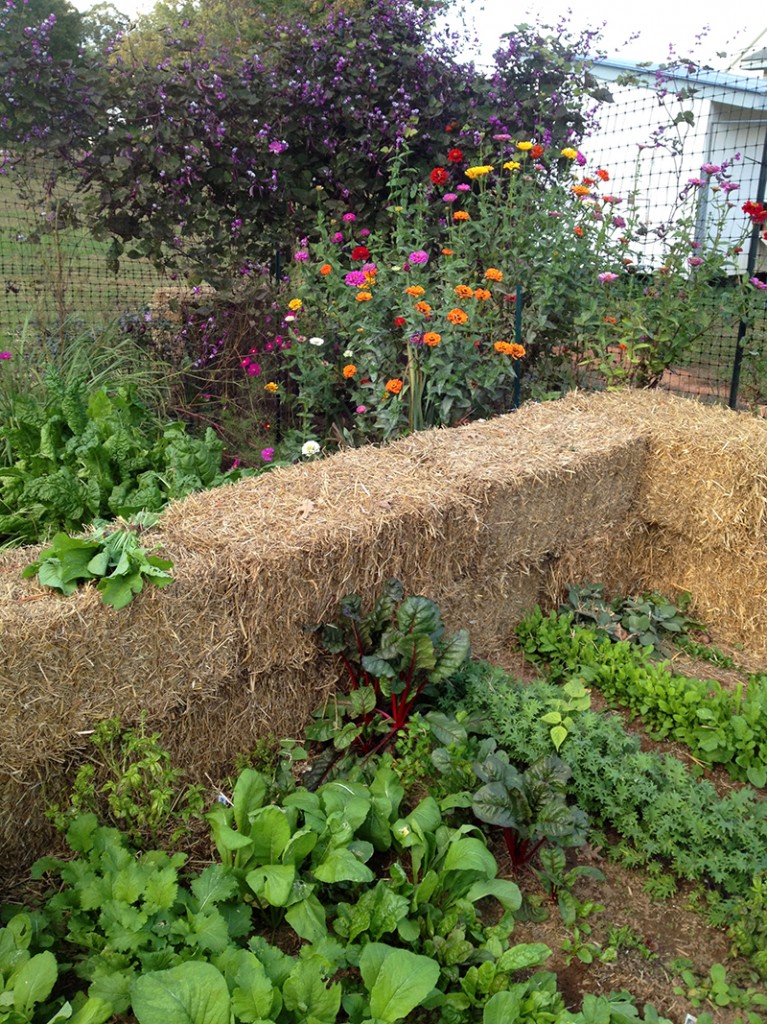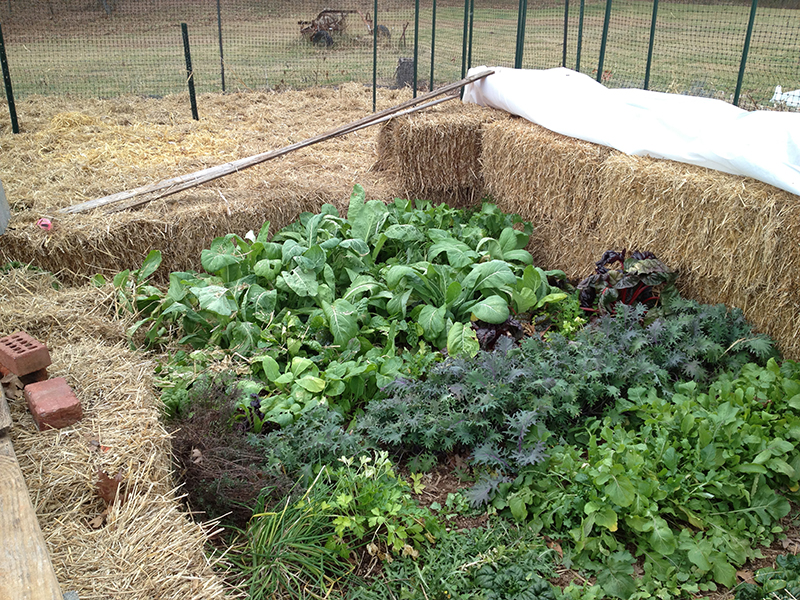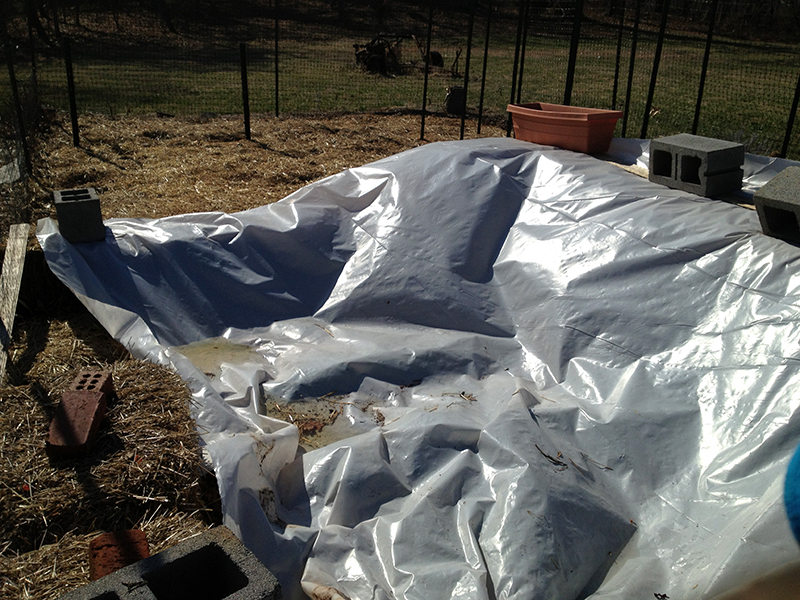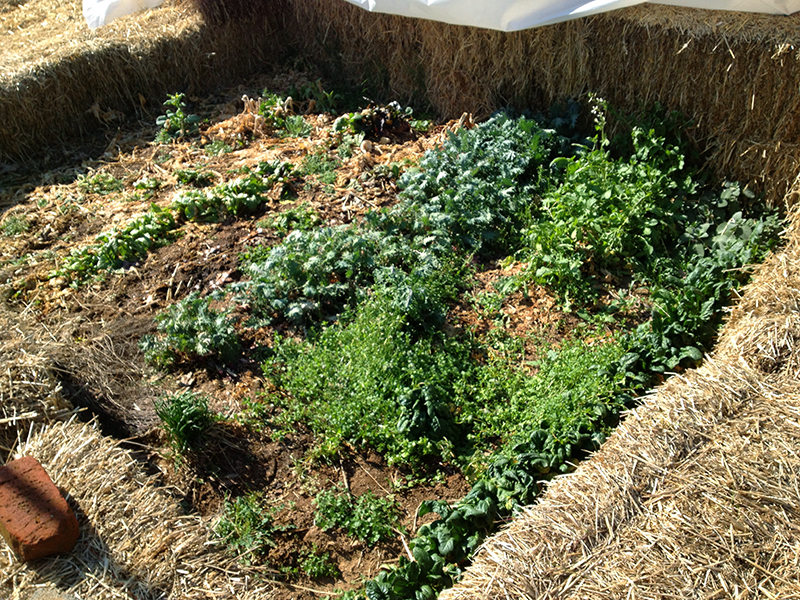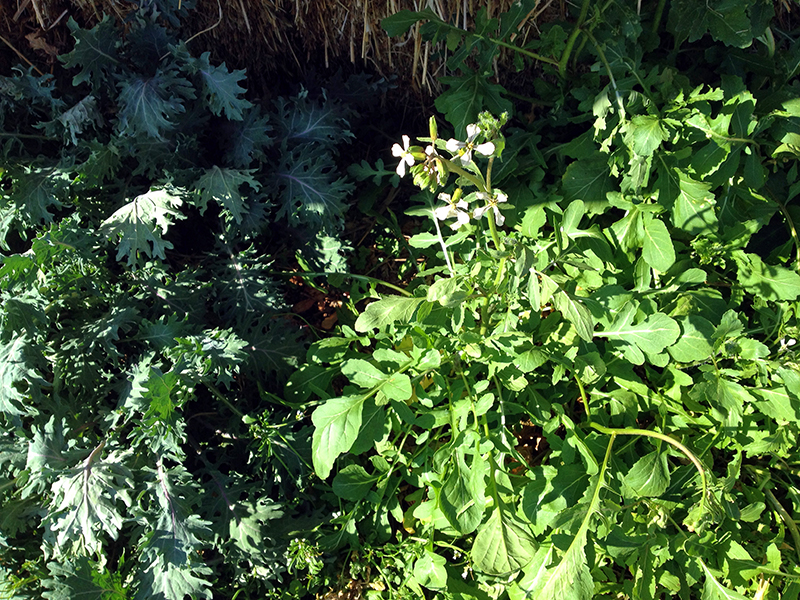Last fall I had grand ideas of building a cold frame to overwinter spinach, kale, chard, and salad greens. In late October, right before the first frost, I stuffed 18 strawbales in the bed of the pickup and when I got home used them to build a small fortress around some rows of greens that I’d sowed earlier in the fall.
I made a one-and-a-half-story, south-facing design thinking that the angle would help trap the sun’s heat and shed water off the big sheet of contractor’s plastic that I draped over the top for a lid. I secured the plastic on top of the bales with some scrap lumber, bricks, and cinder blocks. It was admittedly a hot mess to look at, but that’s one reason that I hid the veg garden out of sight from the house and road!
Things looked good into December, and I kept harvesting greens. But then it started to get really cold and going out to the garden to wrestle with frozen plastic and the icebergs caught in its folds didn’t appeal. So I abandoned the cold frame to the savages of this very long, cold, and snowy winter.
Today I thought I would peek under the plastic, and I was surprised to find quite a few plants happily growing. There were vigorous-looking weeds starting to set seed, though outside the protection of the cold frame none of these weeds are growing yet anywhere on the property—proof that I was successful at creating a little warm microclimate! I was pleased to see chicory, which is called a weed but is actually a very healthy edible spring tonic that you can add to your salad. The Red Russian kale looked pretty good, as did the spinach, and the arugula was flowering. The chard and mustard didn’t make it through as well.
This is a happy discovery as these little plants, which have existed in suspended animation over the winter, mean a jump on the spring growing season—saving weeks of waiting for spring-sown seed to germinate in cold soil. These plants are undoubtedly strong beneath the surface, and all they will need to get up and growing is some more heat and water. After we get through this week—with more cold temps and even possible snow tomorrow—I will start opening the top of the cold frame for short spells to get the plants used to the temperatures and sun.
When it comes time to plant the whole garden, I will spread the nicely aged straw in these bales around the garden as part of my deep mulching soil-conditioning and weed-suppressing strategy.
I will still probably sow some more greens from seed, just to experiment, but while I wait I will be enjoying winter-sweetened greens that amazingly hung in there through multiple polar vortices, being flattened under 16″ of snow, and everything else this winter threw at them.
I am pretty happy that what I thought was a failed experiment at getting greens to grow all winter actually isn’t a total failure. I maybe wasn’t eating lush garden-grown salad in the deepest part of winter, but I can right now, and I probably could have weeks ago had I just peeked under the plastic!

